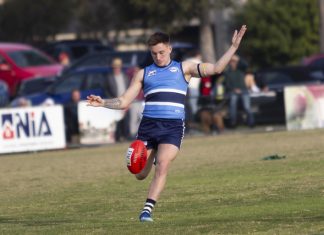Discovering the B24 Liberator hangar in Werribee is like stepping back in time to the 1940s.
The smell of welded metal, the hum of friendly chatter over clattering work tools and the sheer impressive sight of the huge, silvery fuselage welcomes curious visitors to this world-class tourist attraction.
Housed at the site of the former Werribee Aerodrome, the aircraft sits in an American-designed timber truss hangar that is historically significant in its own right. Five of these hangars were built in 1942 at the onset of World War II to support the nearby Laverton and Point Cook RAAF bases. Today, only two hangars remain.
Although the B24 Liberator didn’t land at Werribee during the war, the American-built long-range bomber was used extensively by allied forces in the south-west Pacific to defend Australia from attack during World War II.
It became one of the most important strategic defence tools in the Pacific War strategy, helping troops gain control of Pacific Islands across New Guinea and the Philippines, culminating with the invasion of Okinawa in 1945. In later decades, as memories of the war faded and Australia embraced a future full of prosperity, B24 Liberators were scrapped and forgotten about.
In the 1980s, a group of ex-servicemen and women decided to recognise the aircraft’s contribution by forming the B24 Liberator Restoration Fund, which sought to acquire and restore a B24 Liberator for display in an accredited museum as part of the national collection. A period of acquisition, volunteerism and hard work has secured the future of this unique museum. The efforts are on display each Tuesday, Thursday and Sunday from 9.30am-3.30pm on the corner of Princes Highway and Farm Road, Werribee.
Emma Sutcliffe is a Little River-based freelance writer.







